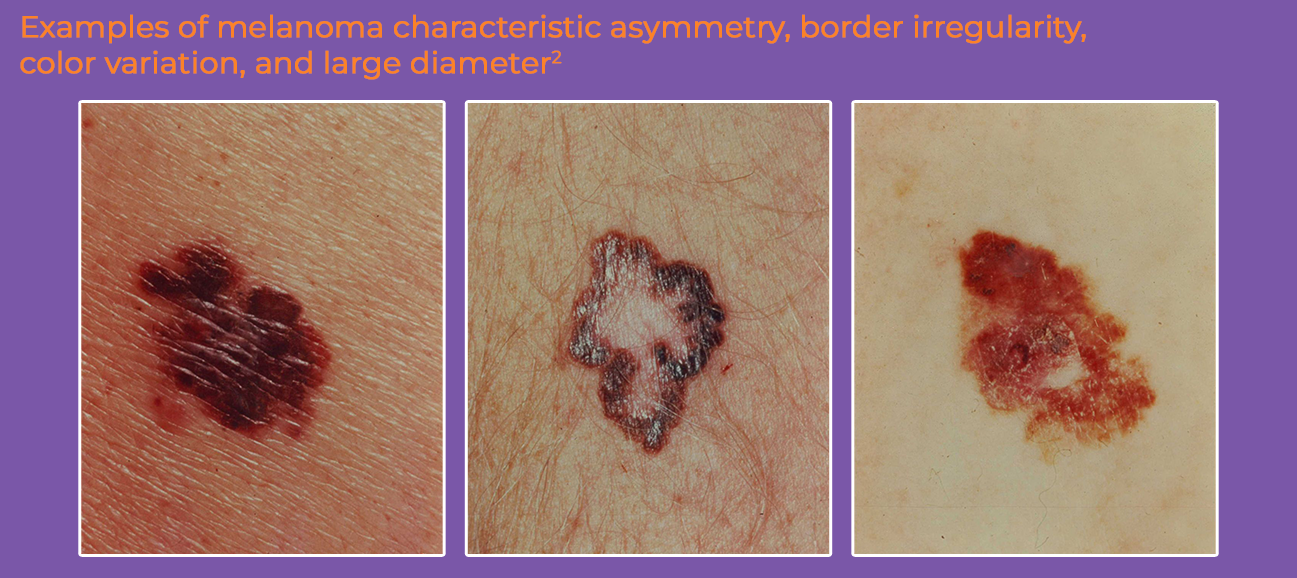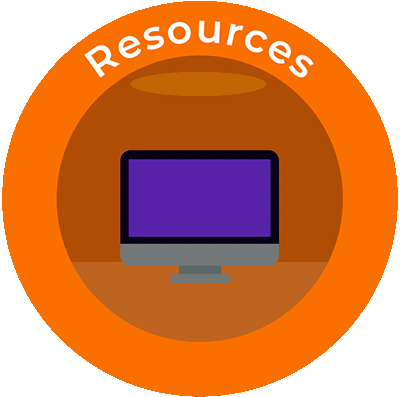Diagnosis and Symptoms of Melanoma
Symptoms of Melanoma
Asymmetry, uneven border, color variation, size of pencil eraser or larger2
Early detection is key to preventing advanced melanoma. The ABCDE guidelines can help you identify an unusual mole (Table, Figure).1,2

General symptoms of advanced melanoma can include one or more of the following3:
Melanoma Diagnosis
Your doctor will determine make your diagnosis after a physical exam and a biopsy. A biopsy is when your doctor takes cells or tissues to view under a microscope.1
During the physical exam, your doctor will ask you about your health history and look at your skin for signs of melanoma. If your doctor finds something of concern, he may take a sample of your skin for testing (a biopsy). By looking at the cells under a microscope, doctors can tell if it is cancer. If the mole or lesion is cancer, other tests may be done to check for gene changes in the cancer.1 Information from the biopsy can help doctors decide how to treat the cancer.4
Types of biopsies include:1
- Shave biopsy
- Punch biopsy
- Incisional biopsy
- Excisional biopsy
Your doctor can tell you more about these, which one they will perform, and why.
Biopsy
The pathologist will decide if there is melanoma present in the sample. They will collect a host of information about your skin sample including the thickness of the melanoma, the presence or absence of ulceration, the speed at which the cells are grow, presence of other immune cells within the sample, margin status (are cancer cells are seen at the edges of the sample), and other things. This information helps your cancer doctor decide how to treat you.
Sentinel Lymph Node Biopsy
Your doctor may also perform a sentinel lymph node biopsy (SLNB or SNB or lymphatic mapping). This is done during surgery and is used to see if the cancer has spread to one or more lymph nodes near the tumor. This information helps your doctor stage the tumor and plan your treatment.1
Other tests
You may be referred to a specialist(s) after an initial diagnosis. Your doctor may also order more tests that can include an ultrasound, computed tomography (CT or CAT) scan, magnetic resonance imaging (MRI), and/or positron emission tomography (PET) or PET-CT scan. All these will be done to further visualize your tumor(s) and check if the cancer has spread to other parts of your body.4
References
- National Cancer Institute. Melanoma Treatment (PDQ)-Patient Version. Updated May 16, 2025 https://www.cancer.gov/types/skin/patient/melanoma-treatment-pdq#_67
- National Cancer Institute. Melanoma (PDQ)-HCP Version. Updated May 2, 2025 https://www.cancer.gov/types/skin/hp/melanoma-treatment-pdq
- Cancer Research UK. Symptoms of Advanced Melanoma. Reviewed. January 30, 2025. https://www.cancerresearchuk.org/about-cancer/melanoma/advanced-melanoma/symptoms-advanced-melanoma
- Mayo Clinic. Diagnosis and Treatment. December 30, 2023. https://www.mayoclinic.org/diseases-conditions/melanoma/diagnosis-treatment/drc-20374888
- American Cancer Society. Tests for Melanoma Skin Cancer. October 27, 2023. https://www.cancer.org/cancer/types/melanoma-skin-cancer/detection-diagnosis-staging/how-diagnosed.html
- National Cancer Institute. Sentinel Lymph Node Biopsy. www.cancer.gov/about-cancer/diagnosis-staging/staging/sentinel-node-biopsy-fact-sheet
All URLs accessed on September 3, 2025














